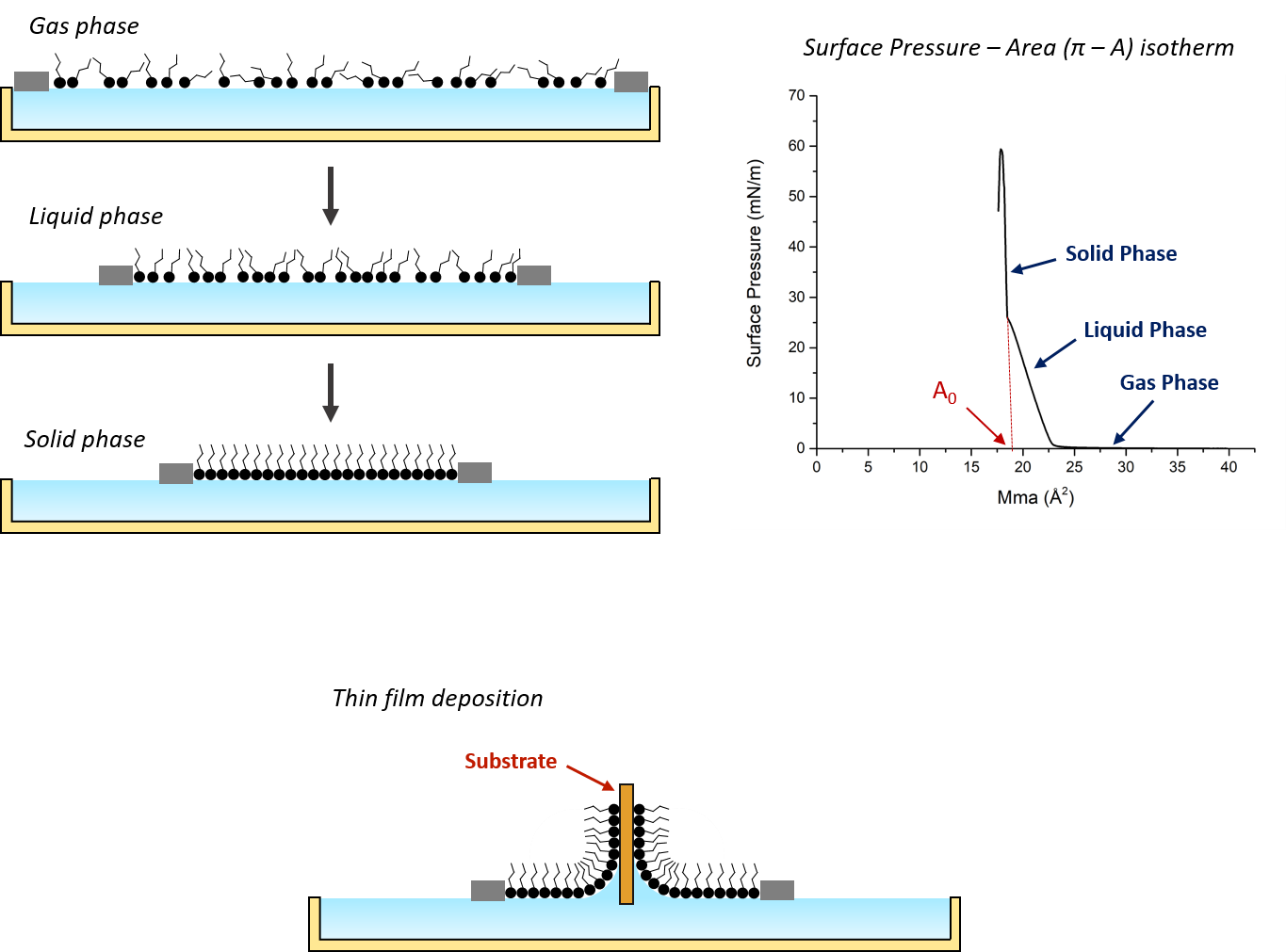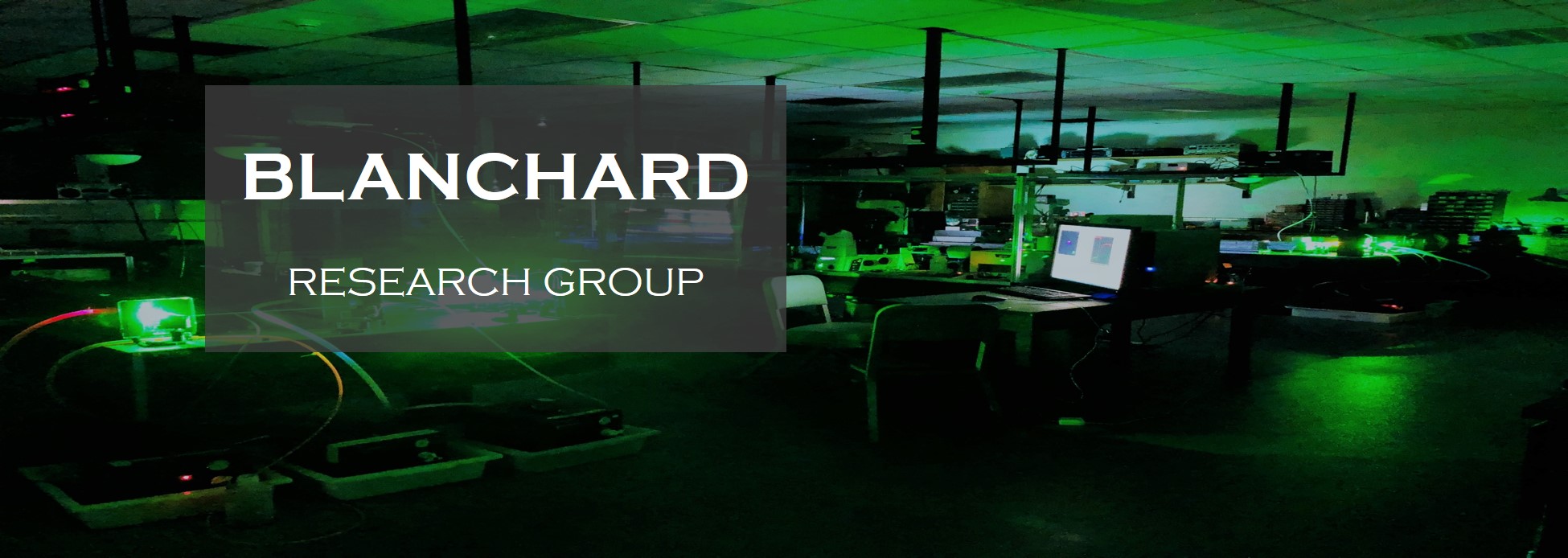TCSPC
PUMP-PROBE
TCSPC-CSM
Observing
the local environment
Observing energy
transfer using
Observing molecular
scale organization
of a
molecular probe
pump-probe
spectroscopy
and interactions
[Learn
more]
[Learn
more]
[Learn more]
FRAP
LANGMUIR-BLODGETT TROUGH
Observing translation
diffusion
and
Forming monomolecular films and
monitoring
mobility
of probe molecules and
films
film
formation and deposition
[Learn
more]
[Learn
more]
|
LANGMUIR-BLODGETT
TROUGH INSTRUMENT

|
Schematic
of Langmuir-Blodgett trough and the different phases of
monolayer formation: gas, liquid, and solid (top left). A
typical surface pressure - area isotherm generated for a
plain fatty acid system is shown (top right), which can be
used for monitoring of monolayer formation. Schematic of
film deposition onto a substrate is shown as well (bottom
left).
|
MONOLAYER
FORMATION, CHARACTERIZATION AND DEPOSITION
EXPERIMENTS
The
Langmuir-Blodgett (LB) technique allows for the precise
formation of amphiphilic monolayers and thin films at the
air/water interface. This technique is advantageous
because it allows the user to control the film composition
and number of layers deposited onto a substrate, and it
provides both qualitative and quantitative information
about the film system and its morphology.
Solutions of amphiphilic molecules (e.g., fatty
acids, lipids) are spread on a water subphase held in a
TeflonTM trough. The
molecules begin in the gas phase, in which they are
randomly ordered and oriented at the gas/liquid
interface. Barriers then compress the amphiphiles
together to form the liquid phase, which has slightly
more order than the gas phase. Finally, the barriers
compress to where the solid phase of the film is
reached, and a cohesive monolayer is formed with a high
level of order and uniformity. These phases can be
monitored in real time through examination of the surface
pressure - area (π - A) isotherm that is
generated during the experiment. Quantitative
information about the film can be deduced by
calculating the mean molecular area (Mma) at which
the solid phase is reached for each film and
comparing between films. Changes in isotherm shape
and position along
the x-axis can be changed monitored as
a function of certain altered variables (e.g.,
subphase pH, added metal ions).
Films can be deposited onto solid substrates via the LB
deposition method governed by the hydrophilic
interactions between the amphiphile headgroups and the
substrate. Further characterization of the film
properties such as fluidity and robustness can be done
using techniques such as FRAP and TCSPC. We also monitor
film morphology during film formation using the Brewster
angle microscopy (BAM) technique, which allows images of
the film during formation to be obtained in real time.
|
|
|
|

